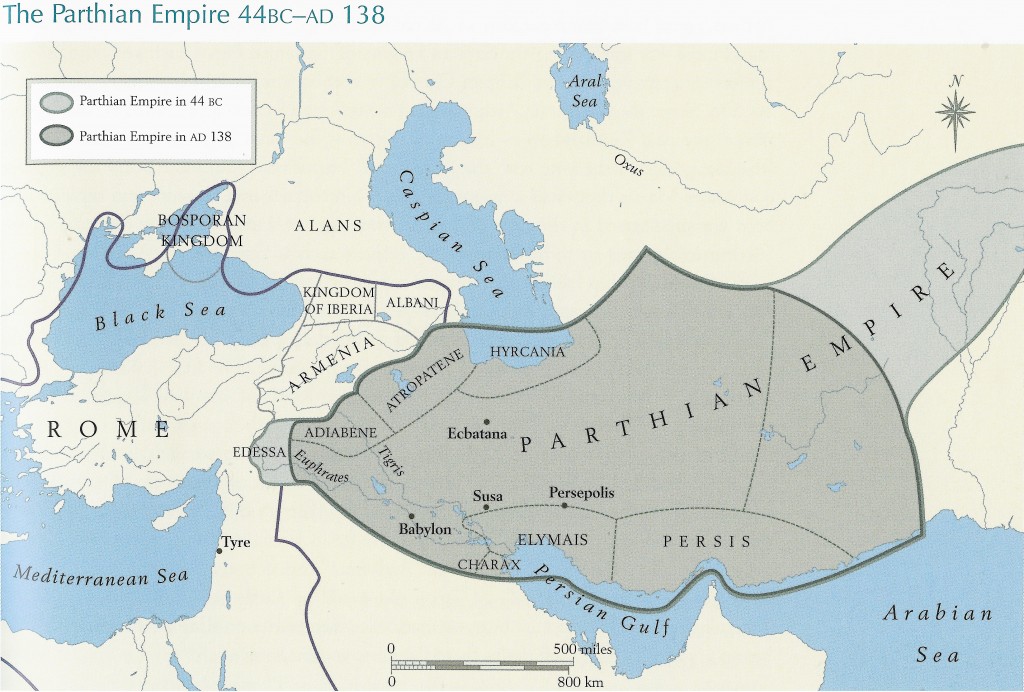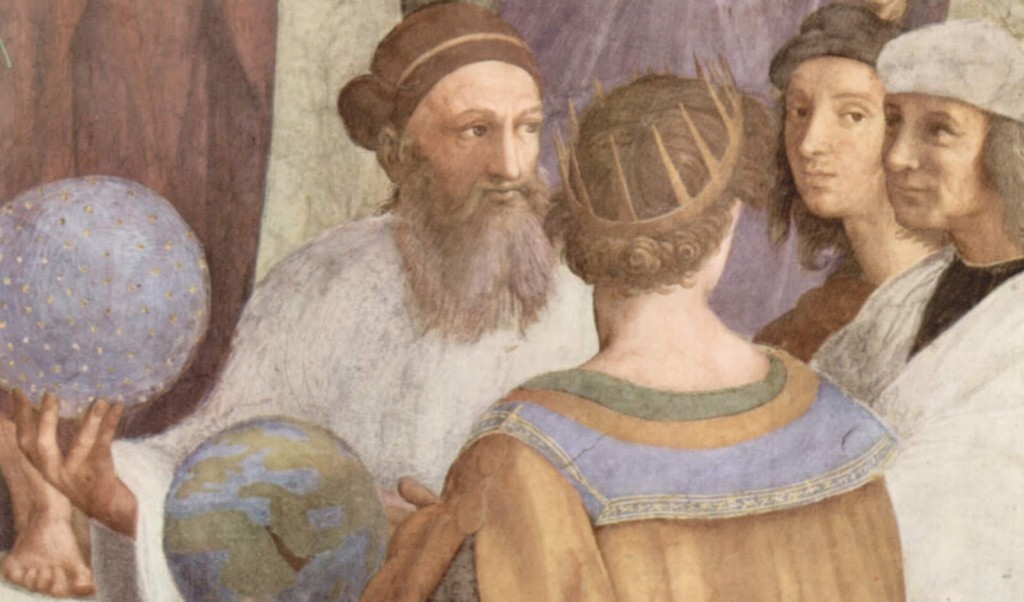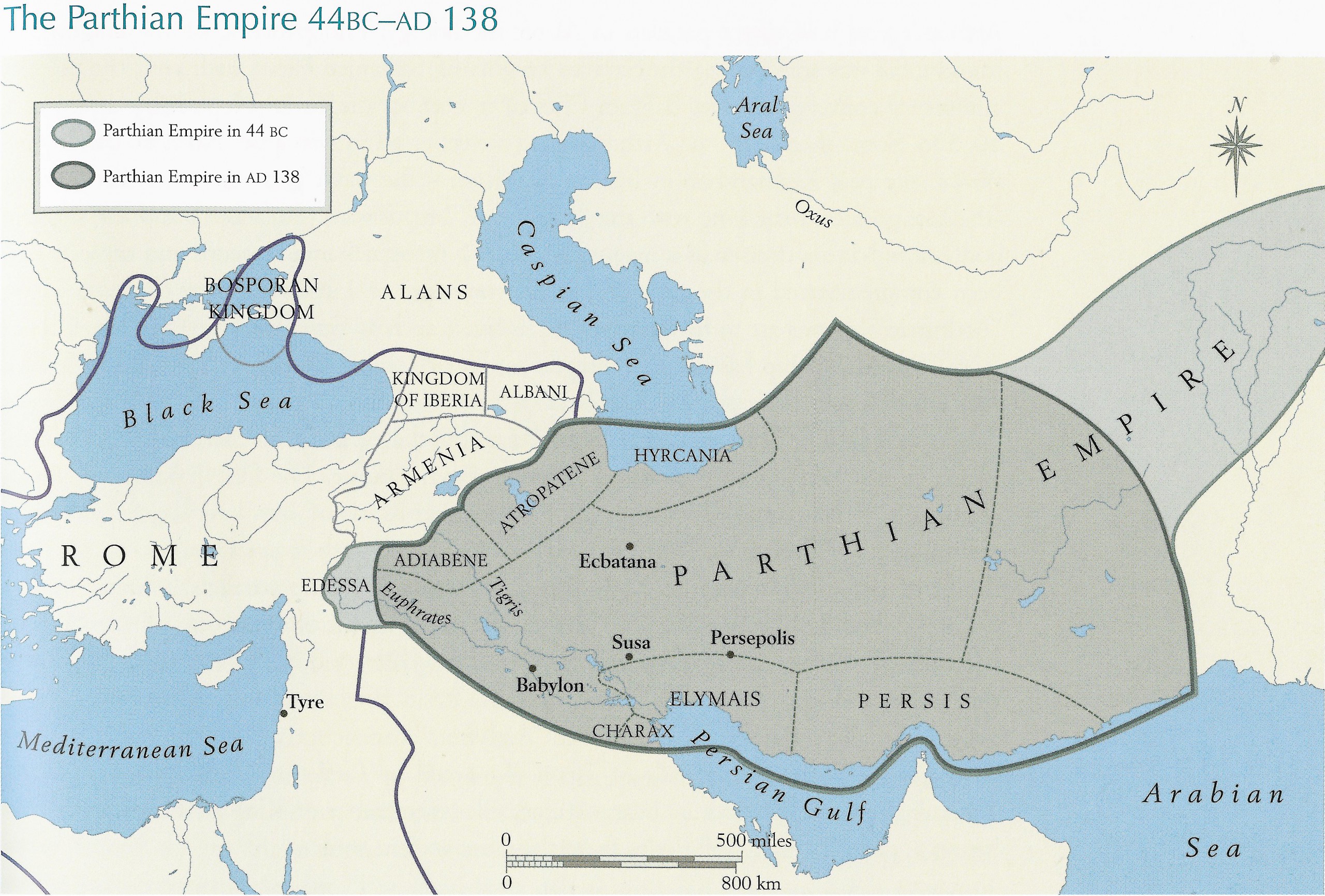The article below on the origins of the Parthians is authored by the late Shapur Shahbazi and was originally posted in the Encyclopedia Iranica. This article is also available in print: Encyclopedia Iranica, Vol. II, Fasc. 5, pp. 542-543.
Readers are also referred to the History of the Parthian army – click here …
=============================================================================
The Parthian rule lasted 474 years, longer than any dynastic period in Iranian history. Throughout this period, the Arsacid era and the Seleucid era which preceded it by 64 years, were both in use, and so it would have been easy to recall that the Ctesiphon accession of Ardašīr I occurred in the 538th year of the Seleucid era and in the 474th year of the Arsacid era. Yet post-Sasanian sources give various figures for the duration of the Arsacid rule, which may be divided into the following categories. 1: 200 ud and (200 odd) years (Great Iranian Bundahišn, Codex DH, p. 109 lines, 10-11 [Tehran, 1971], TD1, p. 207, lines 1-2 [Tehran, 1971], TD2 p. 240, lines 4-5; Ferdowsī: “sāl-i dovīst (some two hundred years)” (Šāh-nāma VII, p. 116); both may be for 203 years, see A. Sh. Shahbazi, “The “Traditional Date of Zoroaster” Explained,” BSOAS 40, 1977, p. 27 n. 19. 2: 266 years, with variants (Šāh-nāma-ye Abū Manṣūrī apud Bīrunī, The Chronology, p. 117; Ṭabarī, I, pp. 706 and 813; Masʿūdī, Tanbīh, p. 97; Baḷʿamī, Tārīḵ, p. 874; Moqaddasī, III, p. 155); this frequently recorded tradition was the official Sasanian reckoning, as Masʿūdī says (see below), and is found also in Agathias (270 years: History 4.24) who used Sasanian royal chroniclers (ibid., 4.30.2-5). 3: 284 years, with slight variants (Masʿūdī, Tanbīh, p. 96; Indian Bundahišn 34.9). 4: 400 years, with variants (Baḷʿamī, Tārīḵ, p. 874; Nāma-ye Tansar, ed. M. Mīnovī, Tehran, 1311 Š./1932, p. 43; Moǰmal al-tawārīḵ, p. 59 [411 years]; Moqaddasī, loc. cit.). 5: 523 years, with variants (Ṭabarī, I, 813, hence Baḷʿamī, Tārīḵ, p. 874; Abu’l-Faraǰ Zanǰānī apud Bīrūnī, The Chronology, p. 119).

Map of the Parthian Empire in 44 BCE to 138 CE (Picture source: Farrokh, page 155,Shadows in the Desert: Ancient Persia at War-Персы: Армия великих царей-سایههای صحرا–).
The last category is of non-Iranian origin, as Ṭabarī specifies, being clearly based on Syrian sources using the Seleucid era: Alexander was usually claimed as the initiator of the Seleucid era (hence the era of Alexander), and was assigned a reign of 14 years (Shahbazi, op. cit., pp. 27ff.); since Ardašīr’s Ctesiphon coronation occurred “538 years after Alexander” (Agathias 4.24), one subtracted his reign from this number and obtained (537-14 = ) 523 years for his successors, the Petty Kings (Pahl.kadag-xwadāy, Ar.-NPers. molūk al-ṭawāʾef). The fourth category is a rough estimate by historians unconvinced of the authenticity of the official reckoning. The third group is a re-adjustment of the figure 266 in a scholastic version (Shahbazi, op. cit., p. 30). The first two categories are, however, based on sound historical—albeit unauthentic—traditions. Masʿūdī (Tanbīh, pp. 97f.) and Bīrūnī (cited by S. H. Taqizadeh, BSOS 9, 1937, p. 125) have noted the great difference of opinion between the Iranians and other nations concerning the post-Alexander chronology, and they have accused Ardašīr of having distorted the facts. “One of the state and religious secrets of the Iranians,” says Masʿūdī, is that Zoroaster foretold that his religion would be disturbed 300 years after him but the religion and empire would be stricken by a calamity at the end of his millennium. Now Ardašīr appeared when only two centuries of the millennium were left, and fearing the approach of the calamity, he “reduced almost by half the 500-year period separating him from Alexander, counting from the petty kings only some rulers with a total reign of 260 years and ignoring the rest. . . And so the chronology was thus officially fixed, and published” (Tanbīh, p. 98). H. Lewy (“The Genesis of the Faulty Persian Chronology,” JAOS 64, 1944, pp. 1977ff.), S. H. Taqizadeh (“The “Era of Zoroaster”,”JRAS, 1947, pp. 33ff.) and W. B. Henning (Zoroaster: Politician or Witch-doctor?, Oxford, 1951, pp. 37ff.) have explained this “secret” more convincingly: under the Sasanians the Seleucid era had come to be identified as the era of Zoroaster, and Alexander had been placed 258 years after Zoroaster; the appearance of Ardašīr in the 538th year of the Seleucid era was then re-interpreted as his rise in the 538th year of the millennium of Zoroaster; of these 538 years, 258 separated Zoroaster from Alexander and 14 belonged to the latter; so (538âŠδ258 + 14 = ) 266 years were left for the Parthian period. The Sasanian measure was taken, then, not because the Parthian period was to be reduced, but because the widely used Seleucid era had to be Zoroastrianized.

A detail of the painting “School of Athens” by Raphael 1509 CE (Source: Zoroastrian Astrology Blogspot). Raphael has provided his artistic impression of Zoroaster (with beard-holding a celestial sphere) conversing with Ptolemy (c. 90-168 CE) (with his back to viewer) and holding a sphere of the earth. Note that contrary to Samuel Huntington’s “Clash of Civilizations” paradigm, the “East” represented by Zoroaster, is in dialogue with the “West”, represented by Ptolemy. Prior to the rise of Eurocentricism in the 19th century (especially after the 1850s), ancient Persia was viewed positively by the Europeans.
The first category—the importance of which is evidenced by its attestation in two major Iranian sources—has so far remained unexplained. But it is clearly based on the re-interpretation of the Arsacid era (q.v.) as the epochal year of the millennium of Zoroaster: Ardašīr’s Ctesiphon coronation was in the (247 + 227 = ) 474th year of the Arsacid era; allowing 258 years for the interval between Zoroaster and Alexander, and assigning 14 years to the latter, one obtained (474âŠδ258 + 14 =) 202 years for the Parthian period. This Zoroastrianization of the Arsacid era must have been the work of the Parthian families who resented the Sasanian re-interpretation of the Seleucid era as the “era of Zoroaster,” so they countered claiming that their era had been initiated by Zoroaster. In this way they sanctified their dynastic symbol at the expense of sharply reducing the period of their rule.
Readers are also directed to the three tables below provided in the Encyclopedia Iranica regarding the chronology of the Parthians:




